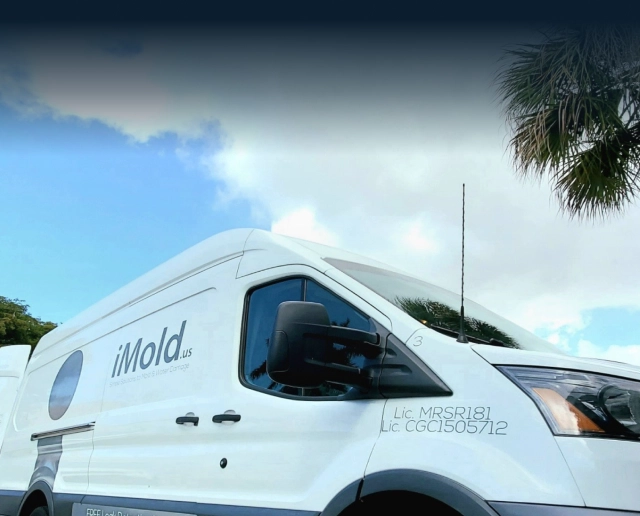What to Do After Mold Remediation
After mold remediation is complete, most homeowners feel a massive weight off their shoulders. However, just because the threat has been dealt with professionally doesn’t mean it’s gone forever. Mold is resilient, and all it takes is a few spores and leaky plumbing for the problem to begin all over again. But that doesn’t mean you’re doomed to a life of mold! Instead, you can take steps to keep your home mold-free and prevent further remediation.
What You Can Do
Follow some tips from iMold’s experienced mold remediation techs to make your home unattractive to mold.
Repairs
After mold remediation is the best time to look for any source of condensation or leaks. At iMold, we have our own licensed contractor that specializes in remediation repairs. We can work hand in hand to identify the mold’s source during remediation, and then tackle any repairs. Since mold can hide away in unseen spaces like inside your walls, a contractor can remove the affected areas and seamlessly replace them. In the event of a flood, you should also check for any necessary repairs on the home’s exterior, like the foundation and roofing. Again, if the source is within your own home, a certified mold technician has the tools and knowledge to detect the source so you can get started. Minor repairs now could save you thousands down the road!
Stay Ventilated
Letting fresh air ventilate your home is never a bad idea, as long as the weather permits. You’ll enjoy the benefits of a fresh breeze while keeping the air moving. A well-ventilated room doesn’t give mold or moisture a chance to settle on surfaces and keeps the air dryer. Pay special attention to bathrooms, laundry rooms, and other high-humidity rooms. Check that your air vent leads outside, and keep it on during and after a shower. Open windows if possible, and wipe down any surfaces with condensation before leaving the room.
Dehumidifiers & Air Filters
Let’s face it; most summer days would be a nightmare without AC indoors. Instead of letting the cool air out, you can purchase dehumidifiers and air filters for your HVAC unit. Dehumidifiers reduce your indoor humidity percentage to a level that isn’t as inviting to mold. A high-quality air filter can catch mold spores before they make their way through your air ducts and spread throughout the home. Not sure where to start when choosing dehumidifiers and air purifiers? Ask your mold remediation tech! More often than not, they’ll have great recommendations that they’ve seen working in action.
Keep it Clean
Did you know that mold can start spreading in less than 48 hours? It needs moisture and a food source to grow, and you can eliminate one of those things by quickly drying up spills or leaks. Mold eats organic materials like fabric and wood, so even the smallest spill on your floor can seep in and attract spores. You can opt for professional carpet and upholstery cleaning for a deeper clean. Professional cleaners use industrial-strength cleaners and vacuums to clean and dry fabrics faster, killing mold and removing traces of spores. Mold doesn’t only eat fibers, but it can also eat dust mites and dead skin cells. Gross! Regular dusting will keep your air cleaner, and your home looking nice, and prevents mold growth.
Check Outside Sources
Did you know that you could be the source of mold or its transportation method? Spores are impossible to see with the naked eye, and they can stick to your clothing, shoes, and pet’s fur. So if you’ve done all the above and still keep finding mold, the source may be from outside the house. Mold can grow anywhere from your car to that antique tablecloth you bought. The home’s location and position on the lot could also be a cause for problems. Water should flow freely away from the house, not toward it. Go outside and take a look at the direction of any slopes or hills. Does your roofing overhang enough? Are your gutters clear? If water has an easy way to get inside your home through the siding or foundation, you’re bound to have more problems than just mold.
Still Finding Mold After Remediation?
If you’re taking the proper precautions and you’re still being affected after mold remediation, it’s time to call a pro. First, you should know that you probably aren’t doing anything wrong; mold is just that resilient. That means you also know how dangerous mold can be and why it’s essential to leave the clean-up to a certified expert.
All iMold technicians are fully trained and certified in mold detection and removal. We want to help you live in a clean and healthy environment, so we use every tool and technique at our disposal. If you’ve followed our tips and yet keep finding mold, we’re here to help. Even if we’ve worked with you before, we’ll provide another free inspection and estimate to take care of the mold for good.
For more mold prevention tips, follow us on Facebook and Instagram. Or, contact us for your free inspection.

